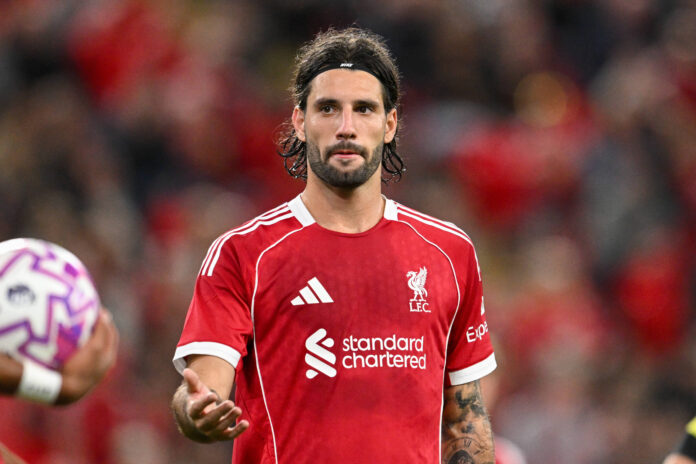Wirtz’s Arrival Reshapes Liverpool’s Midfield Dynamics
The arrival of Florian Wirtz at Anfield for a fee potentially exceeding £116million has shifted the landscape of Liverpool’s midfield. It’s a move indicative of long-term planning but also one that poses immediate questions for head coach Arne Slot.
The Germany international, known for his vision and versatility, has predominantly featured as a No 10 in pre-season. This shift in shape and personnel naturally puts pressure on Dominik Szoboszlai, who operated in that role last season and played a vital part in both Liverpool’s possession game and off-the-ball structure.
Szoboszlai’s output – eight goals and nine assists in 49 appearances – underlined his influence, but Wirtz’s technical quality and creative instincts suggest a different attacking emphasis. Slot has been publicly appreciative of Szoboszlai’s work rate, especially after a standout showing against Ipswich in January. Yet with Wirtz now occupying the advanced role, Szoboszlai finds himself adapting to deeper duties in the midfield structure.
Szoboszlai Embracing a New Role
Pre-season has seen Szoboszlai operate primarily as a left-sided No 8, according to Andy Jones in the Athletic, – a role more physically demanding, but perhaps better suited to his engine and athletic profile. It’s not unfamiliar territory. His pressing numbers remain high, and his ability to recover and drive forward has been evident, particularly in games against Stoke and Athletic Club.
In a recent friendly, Szoboszlai’s clipped pass behind the defence almost set up a goal for Jeremie Frimpong. Moments like that echo the qualities Trent Alexander-Arnold once offered from deeper areas. With the England international now at Real Madrid, Szoboszlai’s range and vision could take on added value.
Liverpool’s goal against Bilbao, sparked by a burst from Szoboszlai, a release to Hugo Ekitike and a low cross converted by Mohamed Salah, encapsulated the midfielder’s growing confidence in his new position.
Mac Allister Offers Balance and Control
If Szoboszlai provides the drive, Alexis Mac Allister offers the calm. The Argentine was pivotal in the latter stages of last season, particularly as opposition teams began to target Ryan Gravenberch in the No 6 role. Mac Allister’s composure, tempo-setting and positional intelligence stood out, notably in the title-clinching win over Tottenham.
His injury at the end of last season may have temporarily halted momentum, but it also opened the door for Szoboszlai to impress in his absence. Still, to discount Mac Allister from Liverpool’s strongest XI would be misguided. His defensive work is often underappreciated, and even with limited minutes in pre-season, his ability to reassert control – as seen in the final 30 minutes against Yokohama – was clear.
Competition Drives Standards
With Wirtz almost certain to start as the central playmaker, the question becomes: who partners Gravenberch in the double pivot? Szoboszlai’s mobility, physicality, and tactical flexibility make him a compelling option, especially against teams who pose a transitional threat. At 6ft 1in, his aerial presence also addresses a lack of height across Liverpool’s back line.
Mac Allister, though, offers something different: a metronome in midfield, capable of stitching together possession and controlling tempo. Slot’s tactical challenge is how to rotate both effectively without losing fluency.
Curtis Jones, too, adds to the selection puzzle, having impressed when stepping in during Mac Allister’s absence last season. The 23-year-old’s ability to play across all three midfield roles further deepens the pool of options.
Liverpool’s midfield has evolved. Where last season’s trio of Gravenberch, Mac Allister and Szoboszlai started 21 league games with an 81 per cent win rate, that combination may no longer be first choice. But with depth, competition, and defined roles emerging, Slot is armed with multiple solutions. It is a tactical conundrum he will welcome.




